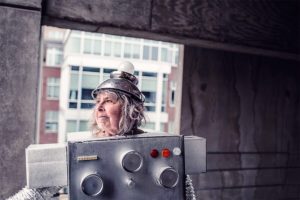What Google Can Teach You About Acupuncture Treatments
- このトピックは空です。
-
投稿者投稿
-
gordonk270818
ゲストOsteopathy, a holistic approach to healthcare, emphasizes the interrelationship between the body’s structure and function. Developed by Dr. Andrew Taylor Still in the late 19th century, osteopathy focuses on the musculoskeletal system, considering it imperative to general health. Osteopathy patient care centers around manual therapies, lifestyle modifications, and preventive measures to address and manage various medical conditions. This approach guarantees a comprehensive and patient-centric treatment experience.
Core Principles of Osteopathy
The practice of osteopathy is founded on several core principles:The body is a Unit: The body functions as being an interconnected whole. A problem in one area can affect all around health.
Structure and Function are Interrelated: Proper alignment and functioning of the musculoskeletal system are essential for optimal health.
The Body’s Self-Healing Mechanisms: Given the correct conditions, one’s body has the innate ability to heal itself.
Treatment Should Address the whole Person: Osteopathy considers physical, emotional, and lifestyle factors in patient care.
Initial Consultation and Assessment
Osteopathic patient care begins with an intensive initial consultation. This consists of a detailed medical history, discussion of symptoms, and assessment of the patient’s overall health and lifestyle. The osteopath conducts a physical examination to observe posture, mobility, and areas of pain or discomfort. This holistic evaluation helps the osteopath identify underlying causes of the patient’s issues and formulate a personalized plan for treatment.Manual Therapy Techniques
The cornerstone of osteopathic treatment methods are manual therapy. Osteopaths use various hands on techniques to address dysfunction within the musculoskeletal system:Soft Tissue Manipulation: This involves massaging muscles and connective tissues to alleviate tension, improve circulation, and enhance mobility.
Joint Articulation: Gentle movements are used to restore function and reduce pain in joints.
Myofascial Release: This technique concentrates on relieving tension within the fascia, the connective tissue surrounding muscles and organs, to improve movement and reduce pain.
Muscle Energy Techniques: The patient uses their muscles against a controlled resistance applied by the osteopath to improve mobility and strength.
Comprehensive Patient Care
Beyond manual therapy, osteopathy involves a holistic approach to patient care. Osteopaths often provide guidance on lifestyle changes, exercise routines, and ergonomics to support recovery and stop recurrence of issues. This might include advice on nutrition, stress management, and posture correction. By addressing these factors, osteopaths aim to promote long-term health and well-being.Treatment of numerous Conditions
Osteopathy is effective in treating a wide range of conditions, particularly those linked to the musculoskeletal system. Common conditions treated include:Back and Neck Pain: Osteopathic techniques can alleviate chronic and acute pain by addressing muscle tension and joint misalignments.
Joint Pain and Arthritis: Gentle manipulation can improve joint function, reduce stiffness, and relieve pain related to arthritis.
Headaches and Migraines: Osteopaths can identify and treat tension and misalignment contributing to headaches.
Sports Injuries: Osteopathy aids in the recovery of sports injuries by promoting healing and preventing future injuries.
Postural Problems: Treatment can correct imbalances caused by poor posture, reducing pain and improving function.
Safety and Efficacy
Osteopathy can be considered safe when performed by a trained and licensed practitioner. Common side effects are mild and may include temporary soreness or stiffness. Serious complications are rare, making osteopathy a low-risk treatment option for many patients. While the efficacy of osteopathy is supported by many patients positive experiences, the scientific evidence varies. Some studies show significant benefits, particularly for chronic pain conditions, while others suggest that more research is needed to fully validate its effectiveness.Preventive Care and Education
An important aspect of osteopathic care is prevention and education. Osteopaths educate patients on maintaining proper body mechanics, ergonomics, and lifestyle habits to stop future medical issues. They might provide exercises to strengthen muscles, improve posture, and increase flexibility. By empowering patients with knowledge and self-care techniques, osteopaths help them take an active role within their well being as well as well-being.Osteopathy offers a comprehensive, patient-centered approach to healthcare that emphasizes the bodys natural capability to heal. Through manual therapy, lifestyle advice, and preventive care, osteopaths address both symptoms and underlying causes of health concerns. This holistic approach guarantees that treatment is tailored to each patients unique needs, promoting long-term health and well-being. As awareness of the benefits of osteopathy clinic is still growing, this approach to patient care is very likely to become an increasingly integral part of modern healthcare.
-
投稿者投稿










